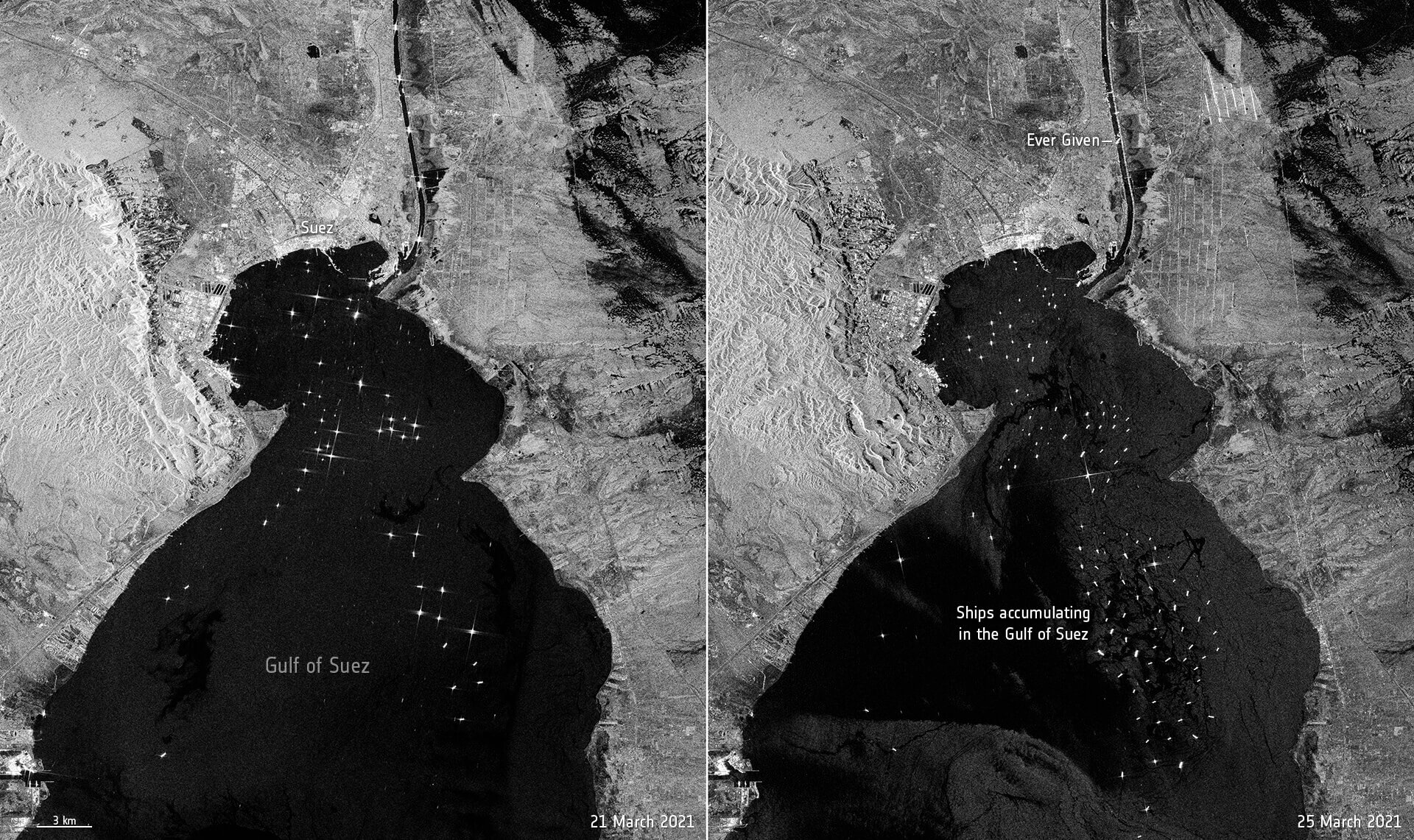The giant container ship stuck in Egypt's Suez Canal is seen in new images taken by the European Space Agency's Copernicus Sentinel-1 mission

The giant container ship stuck in the Suez Canal in Egypt is seen in new images taken by the European Space Agency's Copernicus Sentinel-1 mission.
The Ever Given, a container ship as tall as the Empire State Building, ran aground in the Egyptian Channel after being caught in a sandstorm accompanied by winds that caused low visibility and poor navigation. The incident took place on March 23 during her trip from China to the Netherlands. The photo on the left, taken on March 21, shows routine maritime traffic in the canal with ships at intervals of 2 to 3 km in the canal. The photo on the right, taken on March 25, shows the 400 m long ship blocking the canal.
The Suez Canal connects Port Said on the Mediterranean coast to the Indian Ocean through the Egyptian city of Suez and the Red Sea. The blockade is delaying hundreds of tankers and ships from reaching their destination, and maritime traffic is still accumulating and many ships are waiting in the Gulf of Suez.
Tugboats are trying to dislodge the 200,000-ton ship, with the help of two excavators, nine tugboats and four bulldozers on the bank of the canal. The goal is to remove from the canal bank between 15,000 and 20,000 cubic meters of sand to reach a depth of 12 to 16 meters and thus free the ship.
The two identical Copernicus Sentinel-1 satellites carry radar instruments to provide photographs of the Earth's surface in all weathers, day and night, making them ideal for monitoring ship traffic.
The surface of the sea reflects the radar signal away from the satellite, causing the water to appear dark in the image. This is in contrast to the metal self, in this case the ships in the bay, which appear as bright spots in the dark water.
The damage caused amounts to billions of dollars a day, and has affected the prices of many goods, it is possible that some of the stranded ships, at least those that are located in Western Europe, will have to be towed around Africa.
More on the subject on the science website:

4 תגובות
Actually the decision seems quite simple
1. Time until you reach the traffic jam
2. Optimistic/pessimistic assessment by direct information to event managers
3. Sailing time around Africa
4. Mediation on operational problems, fuel, eating, pooping, peeing.
5. The coffee or gift increases that are passed on to the consumer without blinking an eye.
6. And six to pass the time until the cork opens if you are waiting.
7. Solve a second order differential equation
And that's you have a refined decision
For exchange !!!!!
Israel will be able to build a canal from Eilat to Ashdod
No doubt a one-time investment of millions.
And breaks the market of Egyptians and shares with them half of all the profits
And make Israel a writer of its own. Another income for the country that will always have a demand.
Because we have already completely finished the Dead Sea.
I understand. My suggestion is that Anonymous delete Wiz from his phone, since he doesn't need something to prevent him from getting stuck in traffic before he actually gets to him.
L. Ipsum - the answer to your question - after we get stuck.
I would like to follow the decision-making process of the shipping companies - when and under what conditions the token falls to them (if at all) that it is better to go around Africa to reach the destination.